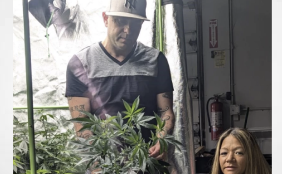The buzz of the cannabis industry has brought with it significant competition. The “green rush” of legalization produced a small group of legitimate competitors in both the consumable and pipe spaces. It is no surprise, then, that innovative companies protected their technology and did everything they could to box out their competition. The industry can expect more of the same as competitors fight for market share in a business ripe for explosion.
This post will examine the three most common forms of patent protection found in the cannabis industry, and an example of where each was litigated.
Utility Patent – Device
One type of utility patent protects the structure of a novel device. A company patents their proverbial “widget” and scans the marketplace to remove any copycats. Within the cannabis industry, this type of patent is most often seen with pipe companies.
E-rig giant PuffCo has not been shy about enforcing their patents. Several years ago, PuffCo sued Kandypens for infringing a PuffCo patent on an e-rig device with a replaceable atomizer assembly. Kandypens eventually agreed to a court-ordered injunction to prevent future sales of that particular design of the Oura product, effectively forcing Kandypens to redesign the Oura. PuffCo then turned its sights to MasterMinded and asserted the same patent. (Puff Corp. v. SHO Products, LLC et al, 2:22-cv-02008-GW-KS (C.D. Cal.)). That case is still pending.
The PuffCo lawsuits illustrate the importance of protecting the structural design of a company’s flagship product. They are also a cautionary tale to review existing patents before embarking on a product launch.
Utility Patent – Composition
Some utility patents can protect a chemical composition. For example, many consumable companies protect their methods of extracting THC and the resulting composition from the extraction.
UCANN obtained a patent for a liquid cannabinoid formulation with at least 95% THC, THCa, CBD, and various combinations of the above including certain terpenes. In 2018, UCANN sued Pure Hemp Collective for patent infringement in the case styled United Cannabis Corp. (“UCANN”) v. Pure Hemp Collective, Inc., 1:18-cv-01922-NYW (D. Colo.). The industry watched with a careful eye given the broad purported scope of the UCANN patent. But then UCANN filed for bankruptcy and the case was stayed, and later dismissed, due to that bankruptcy.
Design Patent
A design patent protects the aesthetic appearance of a device. Infringement occurs when an ordinary observer considers the patented design and the accused product to be substantially the same given their aesthetic similarities. Design patents can therefore be a useful tool against clear knock-offs that are designed to confuse a customer into purchasing a fake product.
One such lawsuit is Mike’s Novelties, Inc. v. Eyce, LLC, 6:20-cv-01754 (D. Or.), where Mike’s asked the Court to find its products do not infringe Eyce’s patents. The case eventually settled with Mike’s designing its products differently and avoiding any rational allegation of design patent infringement.
* * *
The above cases represent just a few acts of patent enforcement within the cannabis industry. The giants appear to recognize the importance of gaining early market share and establishing themselves as the leader in an industry so focused on “who was first.” It remains unclear what fights are on the horizon, but companies will almost certainly have increased focus on patent protection for its more innovative technologies.
https://www.jdsupra.com/post/contentViewerEmbed.aspx?fid=5b93877b-8c22-4a84-8499-2101796088b5

















